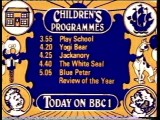 The 1970s was a period of great change for television in general – at the start of the decade colour had only been available on BBC1 and ITV for a few months (and only from key main transmitters), and over half of programmes were still in black and white. The decade that brought bread shortages, power cuts, disco dancing, decimalisation, ABBA, and the Queen’s Silver Jubilee was also responsible for the following BBC children’s television programmes; just a small number of which are illustrated below for your enjoyment. (Just incase you were wondering about The White Seal, it was a cartoon based on a Rudyard Kipling story.)
The 1970s was a period of great change for television in general – at the start of the decade colour had only been available on BBC1 and ITV for a few months (and only from key main transmitters), and over half of programmes were still in black and white. The decade that brought bread shortages, power cuts, disco dancing, decimalisation, ABBA, and the Queen’s Silver Jubilee was also responsible for the following BBC children’s television programmes; just a small number of which are illustrated below for your enjoyment. (Just incase you were wondering about The White Seal, it was a cartoon based on a Rudyard Kipling story.)


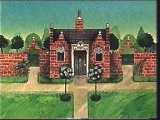
Many of the previous decade’s offerings (eg. Vision On, The Magic Roundabout, Clangers) were still going thoughout all or most of the 1970s in either new or original versions, as well as the later colour episodes of Andy Pandy. Crystal Tipps and Alistair (1972) was one of the new offerings from this decade. Crystal Tipps is the one with the frizzy hair and together with Alistair (the dog) they lived in a house.
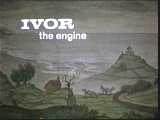

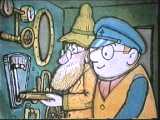
Ivor The Engine was a colour remake of an earlier series produced by the legendary partnership of Oliver Postgate and Peter Firmin, whom had produced (among others) Noggin the Nog, Pogles Wood, The Clangers and Bagpuss (see below). It was also a return to the cardboard cutout animation technique used on Noggin the Nog.

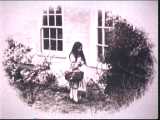
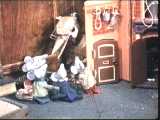
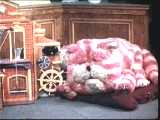 Bagpuss (1974) was a cleverly-conceived animation based around a saggy old cloth cat in a junk shop, which magically came to life together with the shop’s numerous other inhabitants such as Professor Yaffel the wooden woodpecker which normally served as a bookend. The girl Emily (second picture above) who owned Bagpuss was infact Peter Firmin’s youngest daughter. Many regard Bagpuss as the greatest childrens’ television programme of all time, though some may prefer the all-time classic Pogles Wood or The Clangers from the same Smallfilms stable.
Bagpuss (1974) was a cleverly-conceived animation based around a saggy old cloth cat in a junk shop, which magically came to life together with the shop’s numerous other inhabitants such as Professor Yaffel the wooden woodpecker which normally served as a bookend. The girl Emily (second picture above) who owned Bagpuss was infact Peter Firmin’s youngest daughter. Many regard Bagpuss as the greatest childrens’ television programme of all time, though some may prefer the all-time classic Pogles Wood or The Clangers from the same Smallfilms stable.
 Play School started life as the first proper programme to be transmitted on BBC2’s first day in 1964, after a power cut had wiped out what was to have been the official opening ceremony the night before. Play School soon went on to be a favourite with pre-school children to such an extent that a spinoff series Play Away was created for older children, and Play School itself continued throughout the 1970s right up to its eventual demise in 1988. Each edition was usually first shown on BBC2 in a mid-morning slot followed by a repeat showing on BBC1 for those viewers who couldn’t yet receive BBC2.
Play School started life as the first proper programme to be transmitted on BBC2’s first day in 1964, after a power cut had wiped out what was to have been the official opening ceremony the night before. Play School soon went on to be a favourite with pre-school children to such an extent that a spinoff series Play Away was created for older children, and Play School itself continued throughout the 1970s right up to its eventual demise in 1988. Each edition was usually first shown on BBC2 in a mid-morning slot followed by a repeat showing on BBC1 for those viewers who couldn’t yet receive BBC2.
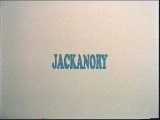
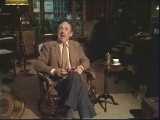

Another children’s favourite of this period (though continuing from the ’60s) was Jackanory, which featured various special guests reading from a storybook. Jackanory has over the years featured some very famous and distinguished guests, including no less than HRH Prince Charles reading from his own book “The Old Man of Lochnigar”. The animated titles featured picture(s) from the book with mirrors to create a rotating kaleidoscope pattern, and the original theme music’s oboe arrangement was changed around the mid 1970s.
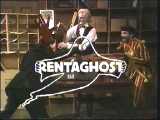
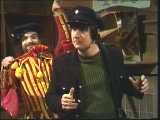
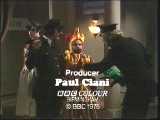
The middle of the decade saw what was possibly the BBC’s answer to ITV’s The Ghosts of Motley Hall – Rentaghost, which featured a selection madcap adventures involving beings of a spectral kind. In the centre picture Mr. Claypole (the jester) is about to perform a vanishing spell.
BBC children’s output also comprises of factual-based programming such as Blue Peter and Record Breakers – as well as being informative they set out to entertain as well. These programmes often had lavish Christmas specials which often include additional entertainment; a case in point being the extravagant All Star Record Breakers of Christmas 1977 that was perhaps one of the more extreme examples.

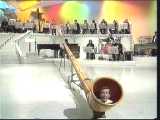
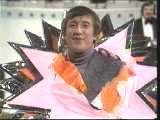
The show kicked off with the song “Catch a falling star and put it in your pocket”, which was interspersed with facts about the universe such as the brightest star in the sky. The presenter Roy Castle (pictured with a paper star) had ample opportunity to show off his musical and dance skills, and a record was also broken during the show for the world’s largest tap dance, complete with an iconic overhead shot of the tap dancers circling the Television Centre fountain.
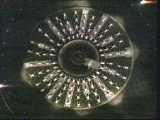


Much of the programme revolved round elaborate pantomime sequences that featured guest stars such as Kenneth Williams (pictured above centre, on the left side of the picture) who was the ‘storyteller’, and the facts and feats were incorporated into the ‘action’ as the story developed.